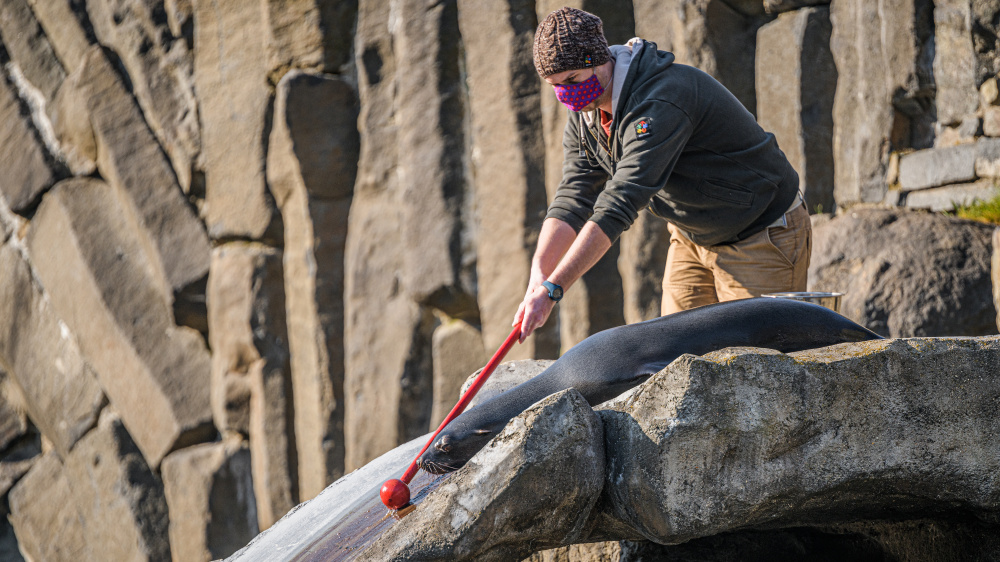Animals are learning
Zoo Praha | 22. 06. 2016
Why should the animals in a zoo be learning anything? In order to remain untied and natural and at the same time to be able to find common ground with the keeper.

Photo: Petr Hamerník, Zoo Praha
Imagine a male elephant weighing several tonnes and you cannot enter his range for safety reasons. How would you treat his soles and how would you examine his mouth cavity? One of the possibilities is to anaesthetise him which represents a lot of effort for the vet, the keepers, it costs a lot of money and it also represents some risk for the elephant. The other possibility is that the elephant simply comes willingly to the contact bar that separates him and the keeper. He puts his foot to the opened window and keeps it there until his hoof is treated. Then he puts there the other feet as well, opens the mouth so that it can be examined and at the end he can let the keeper take a blood sample from his ear. All of this can be done without any stress, voluntarily, just for “several bread rolls”.
And it’s not just about elephants: we need this with many other animals for many different reasons. Other examples of occasions for which our animals are trained include veterinary check-ups (fur seals), taking the temperature and treatment of hooves (Przewalski’s horses), weighing our animals (giant tortoises), or simply the need to have animals move from one area to another so that the first one can be cleaned. Proper treatment of the animals and their regular training pays off, as all such occasions generally go off without any problems to speak of.
The method we are using is called POSITIVE REINFORCEMENT and the cornerstone of it is one common word between the keeper and the animal saying: “Now you did it right!“. According to the species, this “common word” can be a whistle, a clicker, a snap of fingers, a whistle by mouth, certain movement, light of a torch or really one particular word (such as “good”). As soon as there is a way how to communicate between the keeper and the animal, the animals will understand much more than you would expect.
The animals often greatly enjoy their training and look forward to it. However, training does get difficult sometimes. That’s where Prague Zoo’s Animal Training Unit comes in. Its job: to minimize training difficulties. Its experts help keepers and animals find a way to communicate. Training is not, however, the only thing they help with. They also help entertain animals through “enrichment”, i.e. by cultivating the animals’ surroundings to naturally stimulate them in a zoo environment.
We are using the method of positive reinforcement to train these species:
- Ring-tailed lemur
- Fur seals
- Polar bears
- Coatis
- Przewalski’s horses
- Contact animals
- Elephants
- Red river hog








